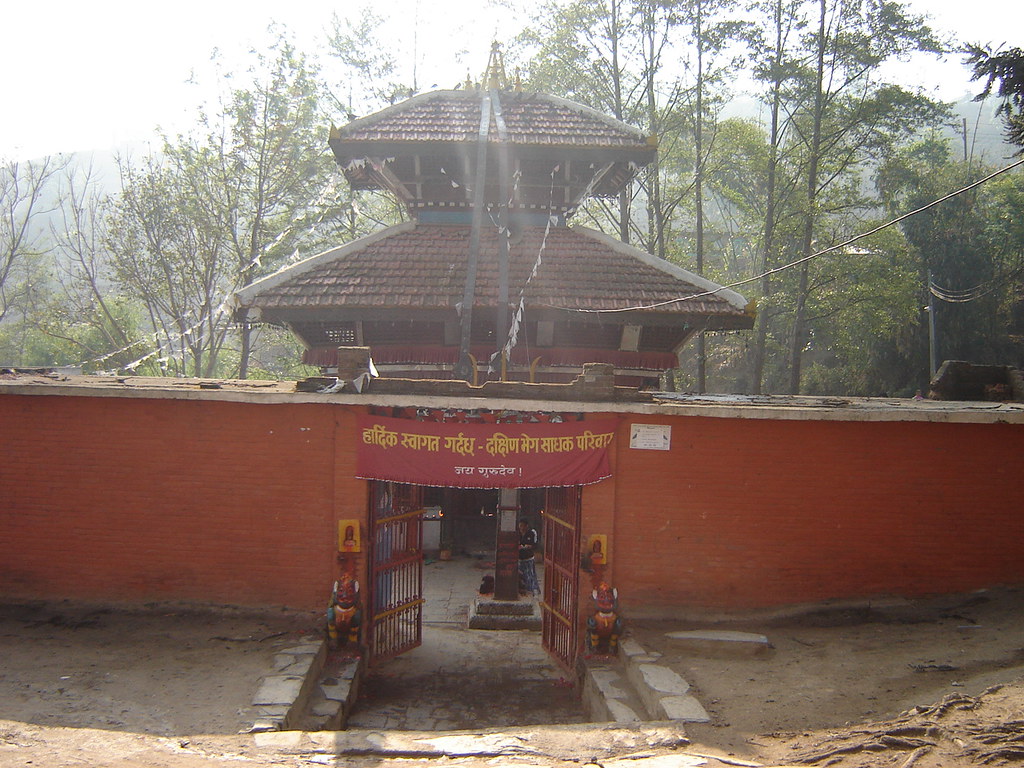In the Newar language, 'Bhajan' means dry-cooking pot. According to Newar custom, when a corpse is taken to the cremation ground to cremate, a large dry-cooking pot is also taken by putting the fire of coal in it; and the dry-cooking pot is thrown there on the pit after the process of cremation is over. After many years, naturally in the pit might have accumulated many bowls and hence got the name of the place 'Bhajangala'. But the local Newars call the village 'Bhajanga:' where 'Ga:' means a hillock without a settlement. In this small village, which is situated south-east of Kirtipur, a white temple can be seen from a far distance.
 |
| Bishnu Devi Temple at Bhajangala There are cremation grounds on both the eastern and western sides of the village. On the eastern side, there is a surprising place for cremation. In this cremation ground, there are bunt only the corpses of the three Guthis of Panga 'Ta: Guthi', 'Chi: Guthi', and 'Pukhusi: Gutihi'. The members of the funeral procession return after having set on fire the corpse put on nine logs and covered with hay. In spite of heavy rain or storm, the corpse is unfailingly found to have turned into ashes. There is a temple of Bishnu Devi by the side of the cremation ground. This temple is thought to be important for sorcerers. |






0 Comments